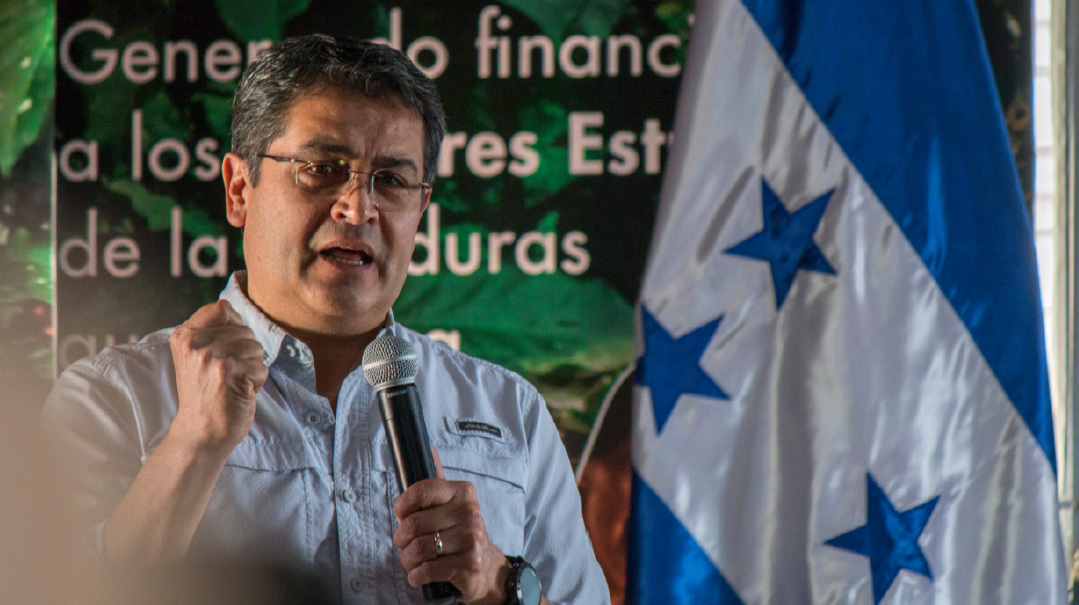The 100 Percent Jew


I
n every city outside theNew Yorkarea where Torah flourishes today there were one or two pioneers who did the heavy lifting to build Torah institutions decades ago. Their primary contribution was not money but sweat equity and determination. What inspired those pioneers is in many cases a mystery as few had any formal Jewish learning beyond an after-school cheder at most.
InHouston that couple was Julius and Eva Lou Chapman. From the time of their marriage as 18-year-olds they were determined to grow as Torah Jews. Only a tragic fire in their home Leil Shabbos Parshas Va’eschanan in which Mrs. Chapman perished and Mr. Chapman (Yosef Chaim Alter ben Malkah) was left in critical condition from smoke inhalation could end their 63-year love affair.
They took the lead in bringing a Torah Umesorah school toHoustonin 1962 and again in 1969 after the failure of the first effort. Mrs. Chapman would prepare and bring hot lunches to the school each day on her way to her job as a legal secretary. Later the Chapmans would also bring the first Seed program to the city as well. (Both Dr. Joe Kaminetsky and Rabbi Avi Shulman were guests in the Chapman home on trips toHouston.)
When their shul moved to a new neighborhood the young couple purchased a lot three houses away from the new building. Mrs. Chapman however dreamed of a mikveh in her own home and had written away for plans from the Spero Foundation. When she found that the builder had already laid the foundation on her lot she traded for another lot further from the shul to fulfill that dream.
On a visit to Houston to check the local mikvaos the Helmetzer Rebbe an internationally renowned expert pronounced the city mikveh to be in need of repair but the Chapmans’ to fully meet his standards. Whenever the mikveh was in use Mr. Chapman would pile all the kids into their car for a “tour of different neighborhoods” to preserve privacy. At least twice the shul and all adjacent houses have flooded while the Chapmans’ home escaped unscathed.
Above all the Chapmans provided models of a Torah life for others to emulate. Eva Lou’s friends were astounded when the young bride would not answer the phone on Shabbos and even more so when she became the first young woman in the city to put on a sheitel. Whenever they learned a new halachah — often from meshulachim passing through the city — the Chapmans immediately implemented it.
As Rabbi Shalom Salfer the principal of the second day school said in his hesped rarely does one meet someone whose beliefs and actions are fully congruent. Eva Lou Chapman was “one of those 100 percent Jews.”
What was right she did without compromises and without paying attention to obstacles. When she decided that a certain Calvin Klein billboard (circa 1979) that her youngest daughter had to pass on the way to school was bad for her neshamah she phoned the mayor ofHoustonto protest. The billboard was removed a few days later.
The Chapmans’ biggest sacrifice was to send away their children to yeshivos and Bais Yaakovs — the boys toMemphisandBaltimoreand the girls to Rabbi Myer Schwab’s seminary inDenverandProspectPark. And every bit of new Torah knowledge with which the Chapman children returned immediately became part of the home.
HOUSTON IS A MAJOR MEDICAL CENTER and the Chapman house became the residence of choice for those accompanying relatives for treatment. It was not fancy but visitors knew they could rely on the religious standards. If a visitor however requested Eva Lou to double-wrap food heated in her oven she was delighted to do so and took no offense. At the most recent chasunah of a grandson inJerusalem a long line of Jews fromIsraelformed to thank her for all she did for them while inHouston.
Among their guests was Mrs. Hinde Tress who met the Chapmans when her husband the great Agudah leader Mike Tress underwent open heart surgery with Dr. Denton Cooley in 1967. As a consequence of that visit Mrs. Chapman started a Neshei AgudathIsraelchapter almost certainly the first west of theMississippi.
Two decades later while distributing Chanukah presents for the Neshei to Jewish children inHoustonhospitals Mrs. Chapman came to the room of a child for whom no parents were listed. She inquired of the nurses and learned the parents intended to put the infant up for general adoption. Mrs. Chapman sprang into action. She located the daughter of an adam gadol close to two of her children who did not yet have children and was eager to adopt.
Then she persuaded the parents who had already completed all the necessary forms to give their child to a Jewish family. (When the father was finally convinced he confided that his wife is a descendant of Rashi.) That infant is today an avreich in Mirrer Yeshivah.
Rebbetzin Malkah (Mollie) Isbee later married to the Gateshead rosh yeshivah Rabbi Avrohom Gurwicz brought her Yerushalmi neighbor and the latter’s son who required quadruple bypass surgery toHouston. She and her neighbor stayed with the Chapmans. As they were leaving Rebbetzin Isbee issued an invitation to the oldest Chapman daughter Nechama to room with her the next year while attending seminary inJerusalem. At the end of following year Rebbetzin Isbee made Nechama’s shidduch to Rabbi Ze’ev Kraines today the rabbi of Ohr Somayach Sandton outsideJohannesburg.
Aunt Mollie also introduced Mrs. Chapman to what was to become her greatest mission: The clothing gemach of herJerusalemneighbor Rebbetzin Shaindel Weinbach. Eva Lou’s efforts on its behalf are the stuff of legend. Once she arrived inIsraelwith 22 suitcases and 14 carry-ons. The Delta skycaps at theHoustonairport eagerly awaited the trips of the lady bringing suitcases for “the poor people of theHoly Land.”
In later years she became a travel agent and excelled in finding the cheapest flights toIsrael. But there was a condition attached: “Would you mind taking a ‘little’ suitcase with a ‘few’ items with you?” The homes of her children were all forward bases filled with suitcases for “Ha’aretz” as she always called it. When she learned thatNew Jerseysenator Frank Lautenberg would be flying with President Clinton on Air Force One to the funeral of Prime Minister Rabin she called her son Louis inPassaicto urge him to ask Lautenberg whether he could take a suitcase of clothes.
MY WIFE AND I have been close to the Kraines family for nearly 40 years and that meant being swept automatically into Mrs. Chapman’s orbit for almost as long. That orbit was so large because she took up so little space for herself. A talkative outgoing woman her least favorite subject was Eva Lou Chapman. Long-distance conversations with grandchildren around the globe were inevitably resumed ten seconds after hanging up for the first time with just one more thing she had remembered to tell them.
One of the mourners at her levayah told me he had been at the Chapman Shabbos table in 1983 the only time he ever met Mrs. Chapman. He insisted it took her over an hour to bentsh. Today when people ask him why he takes so long to bentsh he invariably answers: “Did you ever see Eva Lou Chapman bentsh?”
She kvelled about her nearly 100 descendants but had room in her heart for all. She would hug and kiss her daughters’ school friends when they came to the house. In her trademark gray bag there was also room for spices she knew her granddaughter’s neighbor liked.
She knew every salesgirl in any store in which she shopped by name — and vice versa. The African staff in the supermarket where her daughter Nechama shops inJohannesburginvariably ask her “When is your mother coming next?”
On her next-to-last visit toJerusalem she arrived at her granddaughter’s apartment in the early evening. Though she no longer moved easily when she heard that there was a chasunah that evening at Binyanei Ha’umah of a kallah whose father and brother had been murdered in a terrorist attack on the way to the aufruf she insisted on going — but only after her grandson-in-law returned from night seder at 11 p.m. She was transported with joy at the chasunah attended by thousands just watching the dancing on a video hook-up.
From the chasunah she and her granddaughter went Shabbos shopping after midnight. The cabdriver who took them to and from the chasunah and then shopping and home — and who knew Mrs. Chapman from previous visits — absolutely refused to be paid for the honor of driving such a great tzadeikes.
SHE NEVER STOPPED thanking Hashem for all His goodness to her. “Who would ever have thought two 18-year-olds would be zocheh to such nachas” was her constant refrain. The bracelet with a separate charm engraved with the birthday of every child and grandchild eventually became too unwieldy to wear.
Over the last few months she and Mr. Chapman were zocheh to attend the weddings of two grandchildren one of them inJerusalem; the bar mitzvah of their oldest great-grandchild; and to spend Pesach inSouth Africaand Shavuos with their children inPassaic.
She fulfilled every aspect of the prophet Michah’s definition of what is good in Hashem’s Eyes: She did what is right (asos mishpat) loved chesed and walked humbly with Hashem.
May her memory be blessed.
Oops! We could not locate your form.







